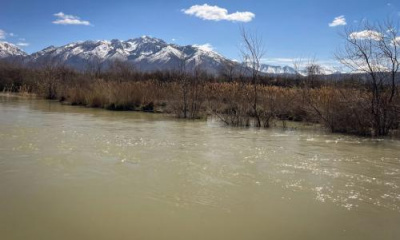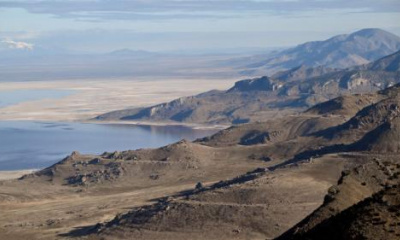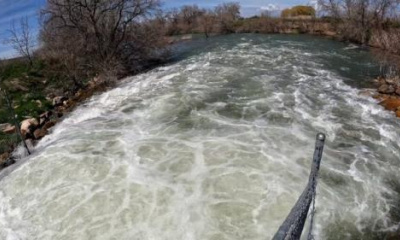Runoff filled reservoirs and knocked Utah out of drought status and water use only ticked up slightly.
When the Great Salt Lake sunk to record-low elevations in 2021 and 2022, Utah residents rallied to save it. They let their lawns go brown or ripped them out altogether. They called out wasteful watering and held rallies calling on lawmakers to secure the lake’s future.
And, even after a record-breaking runoff season that filled reservoirs and raised the lake by a few feet, it seems those conservation habits stuck around.
The watering season just ended, so resource managers are still crunching numbers. But water suppliers across the Wasatch Front report usage numbers for 2023 that look pretty close to the prior two years.
The numbers are “pretty incredible, when you think about how much conservation we saw over the last two years,” according to Laura Briefer, director of Salt Lake City’s Department of Public Utilities. “That definitely made me happy.”
In 2021 and 2022, residents of the capital city used an average of 19.2 billion gallons each year.
“This year is 19.6 billion gallons,” Briefer said. “So we are really, really close to the last two-year average.”
Although the U.S. Drought Monitor shows northern Utah is out of drought conditions for the first time in ages, Briefer said the city opted to keep stage 2 watering restrictions in place this year.
“It seemed to me we could interpret this still as a hydrological drought,” Briefer said, “given lake levels at the Great Salt Lake.”
The south half of the lake sits about 3.5 feet higher than it did at this time last year, but the north half is only a few inches higher. State resource managers filled in a railroad causeway bisecting the lake in 2022 to stave off rising salinity levels and prevent ecological collapse. Had they not done that, total gains for the entire Great Salt Lake this year would probably only amount to 1.5 to 2 feet, despite an unprecedented snowpack.
Weber Basin Water Conservancy District, which provides secondary water to customers in Weber and Davis counties, saw an uptick in outdooring water compared to the drought years of 2021 and 2022. But it’s still nowhere near the amount of watering seen before the Great Salt Lake’s record-low levels.
Data the district provided was from early September, with a few weeks left to go in the watering season.
“Time will tell,” said assistant general manager Jonathan Parry, “but if usage does play out similar to past years and the trends we are seeing continue then we will see a chart detailing water savings better than we had seen in 2019 and 2020.”
Jordan Valley Water Conservancy District also reports deliveries that were only slightly higher than last year.
“[It] is encouraging that the public is maintaining some discipline and restraint in how they water,” Alan Packard, the district’s general manager, said at a Sept. 13 board meeting. “We have had a couple of favorable rainstorms in August and a cooler June but we’re encouraged that the public is developing, hopefully, some long-term habits.”
A district spokesperson further reported that its customers removed 135,000 square feet of turf this season, with another 618,000 in progress.
“We are post-drought,” the spokesperson wrote in an email, “but the commitment to landscape changes continues!”






